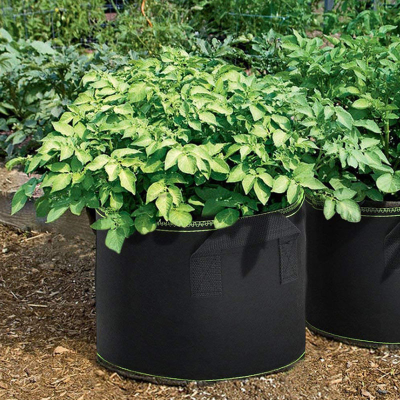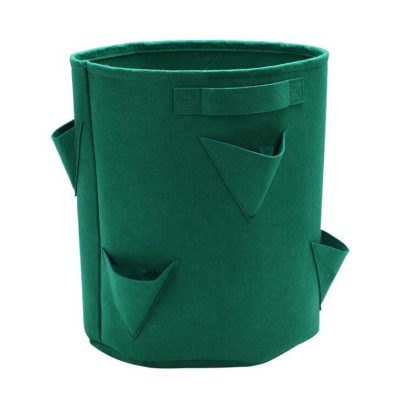Fabric grow bags are indeed considered an eco-friendly alternative to traditional plastic plant containers for several reasons:
- Sustainable Material: Fabric grow bags are typically made from materials such as non-woven polypropylene, felt, or natural fibers like hessian/burlap. These materials are biodegradable, recyclable, and often sourced from renewable resources, reducing the environmental impact compared to plastic.
- Reduced Plastic Waste: Plastic containers contribute to the growing problem of plastic waste and pollution. Fabric grow bags provide a solution by minimizing the use of single-use plastic in gardening and horticulture practices.
- Better Root Health: Fabric grow bags promote healthier root systems due to their breathable nature. The fabric allows excess moisture to evaporate, preventing waterlogging and root rot. It also facilitates air pruning, where roots stop growing once they reach the fabric, preventing root circling and promoting more robust root development.
- Enhanced Drainage and Aeration: The porous nature of fabric grow bags allows for excellent drainage, preventing water from becoming stagnant. The fabric also promotes air circulation to the root zone, preventing the soil from becoming compacted and improving nutrient uptake.
- Reusability: Fabric grow bags are durable and designed for multiple seasons of use. They can be easily washed, dried, and stored, allowing you to reuse them year after year. This reduces the need for constantly purchasing new containers and further reduces waste.
- Space and Mobility: Fabric grow bags are often collapsible and lightweight, making them easy to transport and store. This feature is especially beneficial for urban gardeners, balcony gardening, or those with limited space.
- Versatility: Fabric grow bags are available in various shapes and sizes, accommodating a wide range of plants, from herbs and vegetables to trees and shrubs. They can be used in traditional gardens, raised beds, or even indoors.
- Sustainable Landscaping: Fabric grow bags are commonly used in landscaping and restoration projects. They allow for easier transplantation of plants, reduce transplant shock, and promote healthier root establishment.
By choosing fabric grow bags over plastic containers, gardeners and horticulturists can contribute to a more sustainable and environmentally friendly approach to gardening while still providing optimal growing conditions for their plants.








